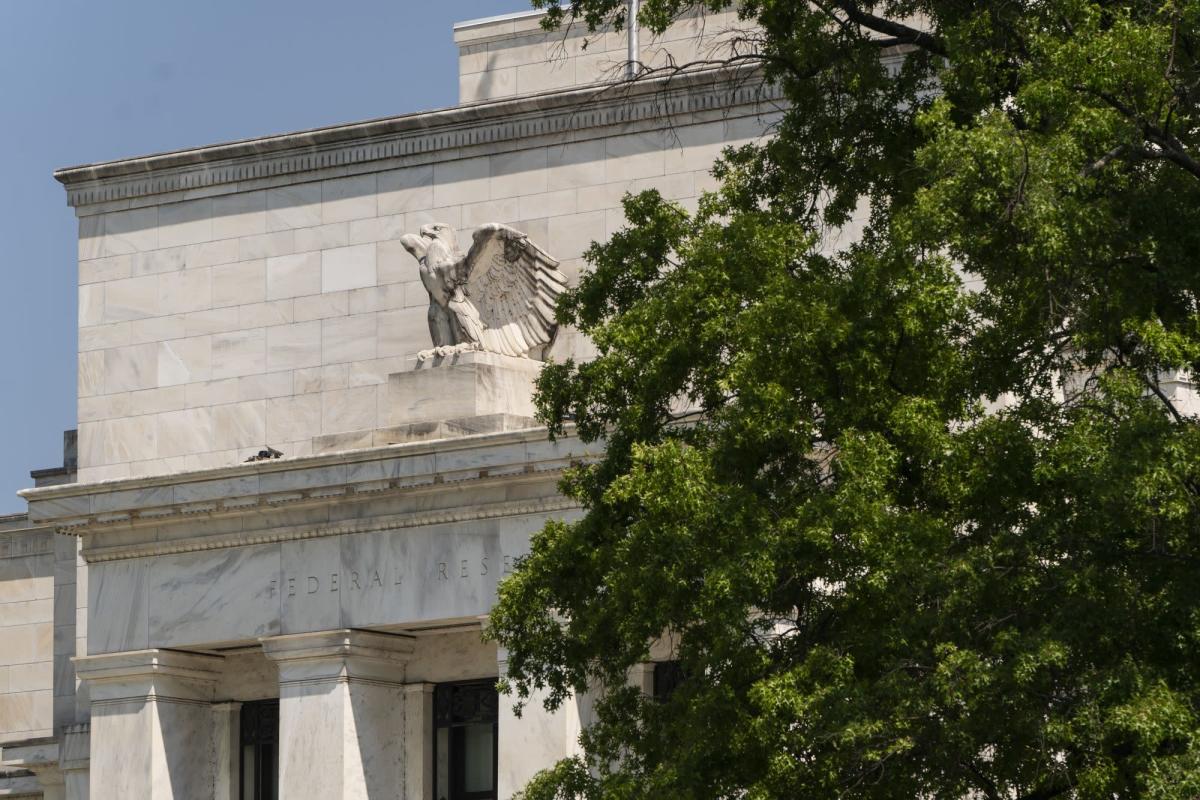Fed Hikes 75 Basis Points, Powell Says 75 or 50 Likely in July

(Bloomberg) — The Federal Reserve raised interest rates by 75 basis points — the biggest increase since 1994 — and Chair Jerome Powell signaled another big move next month, intensifying a fight to contain rampant inflation that officials failed to foresee.
Most Read from Bloomberg
Slammed by critics for not anticipating the fastest price gains in four decades and then for being too slow to respond to them, Powell and colleagues on Wednesday intensified their effort to cool prices by lifting the target range for the federal funds rate to 1.5% to 1.75%.
He said another 75 basis-point hike, or a 50 basis-point move, was likely at the next meeting of policy makers, who forecast interest rates would rise even further this year, to 3.4% by December and 3.8% by the end of 2023.
“Clearly, today’s 75 basis point increase is an unusually large one and I do not expect moves of this size to be common,” he told a post-meeting press conference in Washington, remarks that were cheered in financial markets as he took the risk of a string of super-sized increases off the table.
Stocks climbed, Treasury yields tumbled and the dollar pushed lower. Economists at Barlcays Plc said it expects the Fed will only raise rates by a half point next month.
Even so, the move on Wednesday was more hawkish than the 50 basis point shift previously signaled by the chair, who explained the change in tack by pointing to a run of data showed inflation and expectations for it accelerating.
Late last week, an early-June survey from the University of Michigan showed consumer inflation expectations pushing higher. Respondents anticipated inflation rising 5.4% in the year ahead, the highest since 1981. Longer-term price expectations also picked up.
The preliminary June readings were “quite eye-catching, and we noticed that,” Powell said. “One of the factors in our deciding to move ahead with 75 basis points today was what we saw in inflation expectations” in addition to the hotter-than-expected rise in the consumer price index for May.
Officials projected raising it to 3.4% by year-end, implying another 175 basis points of tightening this year. The median prediction of officials was for a peak rate of 3.8% in 2023, and five forecast a federal funds rate above 4%; the median projection in March was for 1.9% this year and 2.8% next. Traders in futures markets were betting on a peak rate of about 4% ahead of the release.
The Fed reiterated it will shrink its massive balance sheet by $47.5 billion a month — a move that took effect June 1 — stepping up to $95 billion in September.
What Bloomberg Economics Says
“The most notable change in the policy statement is the omission of the phrase “the committee expects inflation to return to its 2% objective.” That suggests the FOMC sees price pressures persisting, and has grown more alarmed about the potential unmooring of inflation expectations.”
— Anna Wong, Yelena Shulyatyeva, Andrew Husby and Eliza Winger (economists)
— To read more click here
The Federal Open Market Committee “anticipates that ongoing increases in the target range will be appropriate,” it said in a statement after a two-day meeting in Washington. “The committee is strongly committed to returning inflation to its 2% objective.”
The central bankers also revised their outlook for the economy from the soft-landing scenario of March to a bumpier touchdown, underscoring the tough task Powell faces as he tries to tame inflation running about three times the Fed’s 2% target without causing a recession.
Having just won Senate confirmation to a second four-year term, Powell must also re-establish the Fed’s inflation-fighting credibility with investors and with Americans who are furious over the soaring cost of living.
“We’d like to see demand moderating. Demand is very hot still in the economy. We’d like to see the labor market getting better in balance between supply and demand,” he said, adding that officials won’t “declare victory” until they see compelling evidence that inflation is coming down.
He dismissed the suggestion that the Fed was trying to induce a recession, saying he saw “no sign” of a broader slowdown while assuring Americans that higher rates could be borne.
“It does appear that the US economy is in a strong position, and well positioned to deal with higher interest rates,” he said.
The Fed aims for 2% inflation measured by the Commerce Department’s personal consumption expenditures price index, which rose 6.3% in the 12 months through April, near a 40-year high. Policy makers now forecast the gauge to advance 5.2% this year, up from 4.3% in the March projections, based on the median estimate of Fed governors and regional presidents.
They forecast gross domestic product growth to slow to 1.7% this year compared with a 2.8% expansion projection in March. Unemployment could rise to 4.1% at the end of 2024 from 3.6%.
The FOMC vote, which included newly sworn-in governors Lisa Cook and Philip Jefferson, included a dissent from Kansas City Fed President Esther George, who preferred a half-point increase.
Powell will testify before Congress over two days next week, where he can expect to be challenged over his central bank’s performance.
(Updates with more Powell comment during press conference in 8th paragraph.)
Most Read from Bloomberg Businessweek
©2022 Bloomberg L.P.




